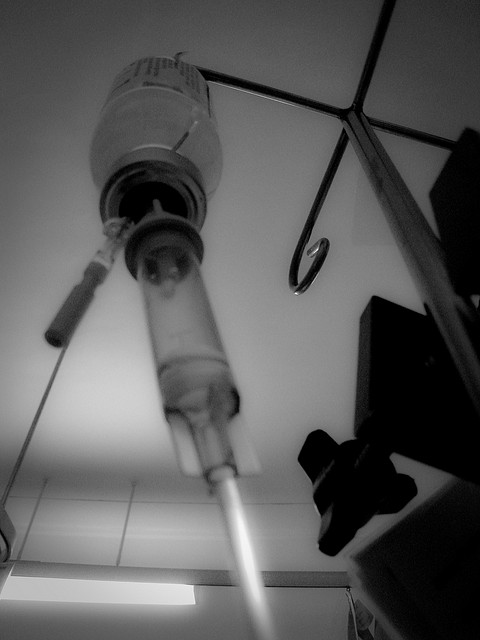The Fall – A Short Story in Three Parts – Part Three
This is the third of a three part story by 10 year old Alice. Read Part One and Part Two first.
My view is hazy, but I can work out the blurry shape of a nurse, standing by my bed. My eyelids shut; the light was stinging my eyes.
“Hello?” The voice is soft. I decide to answer.
“Hello,” I answer.
“I’m Josie,” says the nurse, pulling up a chair beside the bed. “What’s your name?”
“Kieran,” I reply, chewing my lip.
“Well, Kieran, you’ve been through a lot,” she says. She feels my forehead. “You had a raging fever you know. How do you feel now?”
Egg Box Gardening
I started a little experiment of my own this spring. I wanted to find an easy way of sowing seeds for growing vegetables at home. I have a small veggie patch, but I worked out last year that I could grow a lot more, if only I had many more seedlings to plant out.
But sowing seeds can be a bit fiddly, and then you’ve got to plant out each tiny plant. That takes a lot of time. I wanted more veggies for less work, so I collected as many egg boxes as I could find, and sowed seeds into each egg holder. The pictures show the planting and growing on of broad beans, but I have also used the egg boxes for runner beans, radishes, beetroots, spinach, tomatoes, rocket, pak choi and patty pans.
And it’s not too late to start growing your own right now. You don’t even need a veggie patch in the garden; plant the egg boxes into a pot or container for your window sill or patio.
Why DO Kids Want to Play Minecraft?
Sitting back, ready for another interesting and rather aggressive night on COD (Call of Duty), I launch my dashboard to see the usual suspects all gathered playing the latest shoot ’em ups.
Except one. Looking again, I notice my 13-year-old brother Jimbob is playing a game I’ve never seen – MINECRAFT.
After much persuasion and explanation “COME ON BRO, BUY IT PLEASE, YOU BUILD STUFF”, I decide to purchase it, in order to support him in our mum’s campaign to play online more responsibly.
The game launches and all I see is blocks. Have I got the right game? Where are the graphics?
Wandering mindlessly around, past trees, rivers and spiders, until Harvey Jimbob asks me to come to his house. Here’s the strangest part: he built it.
What is Juno?
There has been a lot of excitement about the Juno probe this week, but what is it and what is its mission?
What is Juno?
Juno is a spacecraft designed and operated by NASA, the US space agency. It was launched from Cape Canaveral on the 5th August 2011 and has taken almost 5 years to travel the 716 million kilometres to Jupiter, the largest planet in our solar system. Juno is 3.5 metres in height, and when its solar arrays are extended it’s more than 20 metres across. These arrays are covered in more than 18,500 solar cells, which allows Juno to operate even when it’s at such a great distance from the Sun.

(Image: NASA)
Why is it called Juno?
In Roman mythology Juno was the Queen of the gods. She was married to the king, Jupiter, who wasn’t always well-behaved. Juno had to peer through the clouds to discover what he was up to; the spacecraft is called Juno because it will be looking beneath the clouds that cover the surface of the planet Jupiter.
Aboard the Juno craft are 3 models of Lego minifigures: Jupiter, Juno and Galileo, who discovered in 1610 that Jupiter had moons.

From left to right: Galileo, Juno and Jupiter. (Image: NASA/JPL-Caltech/LEGO).
What is it looking for?
Jupiter is enormous; it’s two and a half times larger than all the other planets in our solar system combined. It’s made entirely of gases and is believed to have no solid surface. The planet rotates at an immense speed, completing one rotation every ten hours, and telescopes have shown us that it has a cloudy atmosphere with colourful spots and stripes. The largest of these, known as the Great Red Spot, is a storm that is several times the size of Earth and has been raging for more than 300 years.

Jupiter. The Great Red Spot is clearly visible. (Image: NASA).
This mission is the first time that humans will be able to glimpse what lies beneath Jupiter’s cloudy atmosphere. The main objective is to understand how the planet formed and evolved, which will give us more information about the formation of gas giants as well as the rest of the solar system. Juno will also measure the quantities of water and ammonia within the atmosphere, examine the magnetic field that surrounds the planet, observe any polar auroras and measure the gravity to see whether a solid core may exist after all.
For more information about the Juno mission you can watch this video from Nasa, and have a look at the Juno mission webpage.




